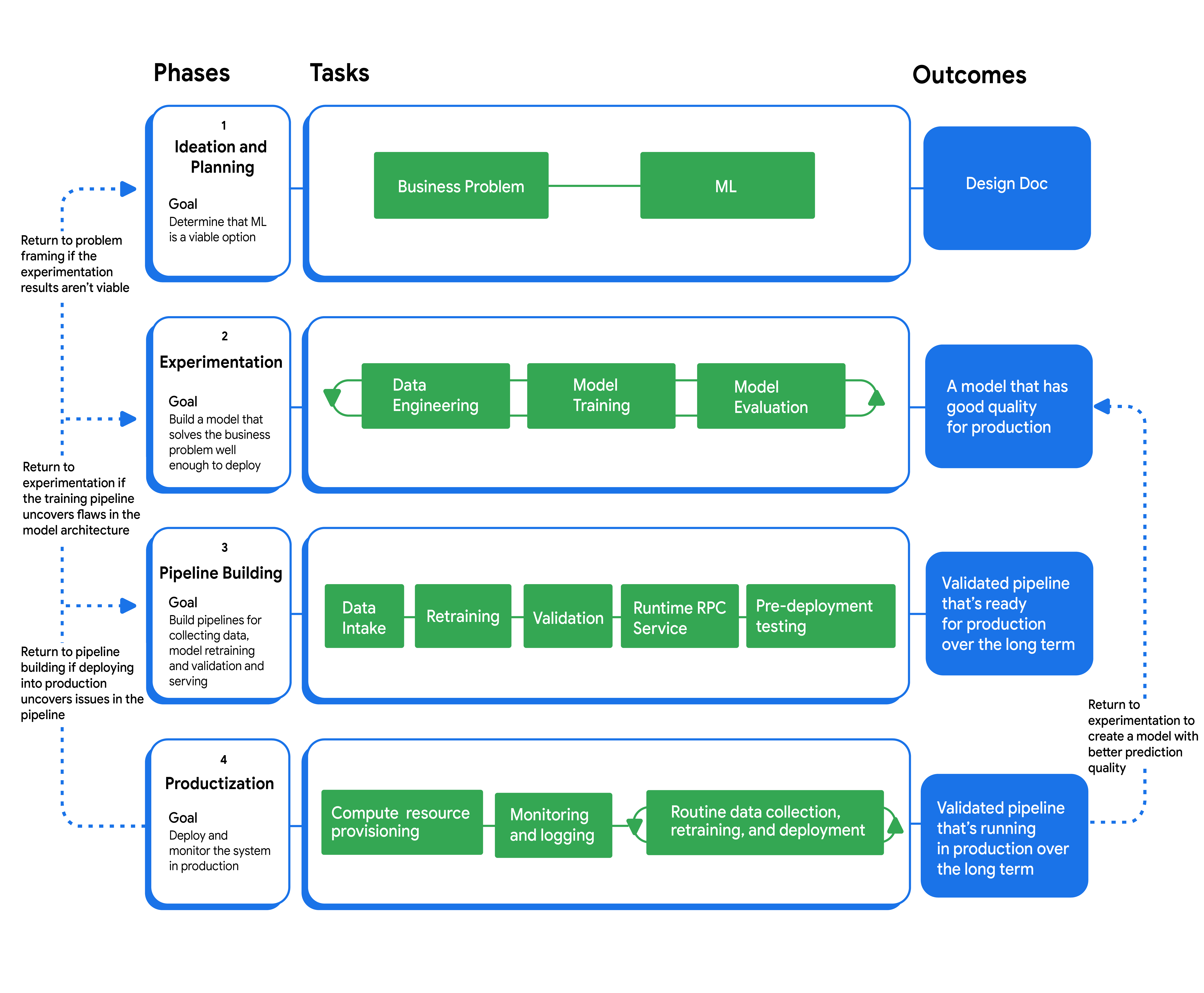Page Summary
-
ML solutions are developed in iterative phases: ideation and planning, experimentation, pipeline building, and productionization.
-
Each phase has specific goals, tasks, and outcomes that contribute to the overall success of the project.
-
Identifying the right problem for an ML solution and ensuring its feasibility is crucial in the initial phase.
-
Rigorous experimentation is essential for building an effective ML model and may involve numerous iterations.
-
Productionizing an ML solution requires robust pipelines for data processing, model training, serving predictions, and ongoing monitoring.
ML projects progress in phases with specific goals, tasks, and outcomes. A clear understanding of the ML development phases helps to establish engineering responsibilities, manage stakeholder expectations, and efficiently allocate resources.
Successfully moving through the phases (often iteratively) is foundational for designing, assembling, and building ML models that solve business problems over the long term.
At a high level, implementing an ML solution consists of the following phases:
- Ideation and planning
- Experimentation
- Pipeline building
- Productionization
Ideation and planning
During the ideation and planning phase, you frame your problem in terms of an ML solution and estimate the project's feasibility.
- Goal: To determine if ML is the best solution to your problem.
- Tasks: Analyze the business problem to understand your project's constraints.
- Outcome: A design doc outlining how to solve a problem with a ML solution.
Experimentation
Experimentation is the core of machine learning. During this phase, you verify that an ML solution is viable. Finding a solution is an iterative process. It's not uncommon to try hundreds of experiments before finding the right combination of features, hyperparameters, and model architecture that solves the problem.
- Goal: To build a model that solves the business problem.
- Tasks: Experiment with features, hyperparameters, and model architectures.
- Outcome: A model with good enough quality to put into production.
Pipeline building and productionization
During the pipeline building and productionization phase, you build pipelines for processing data, training a model, and serving predictions. You then deploy the model and pipelines into production with the necessary monitoring and logging infrastructure.
- Goal: To build and implement the infrastructure for scaling, monitoring, and maintaining models in production.
- Tasks: Build pipelines to automate many of the tasks for keeping up-to-date models in production.
- Outcomes: Validated ML pipelines.
End-to-end ML workflow
The following diagram illustrates the entire end-to-end ML workflow, listing each phase and its tasks and outcomes:

Figure 1. The four main phases of an ML workflow.
Keep in mind
Multiple challenges exist at each phase. Not realizing—and planning for—them may lead to missed deadlines, frustrated engineers, and failed projects.